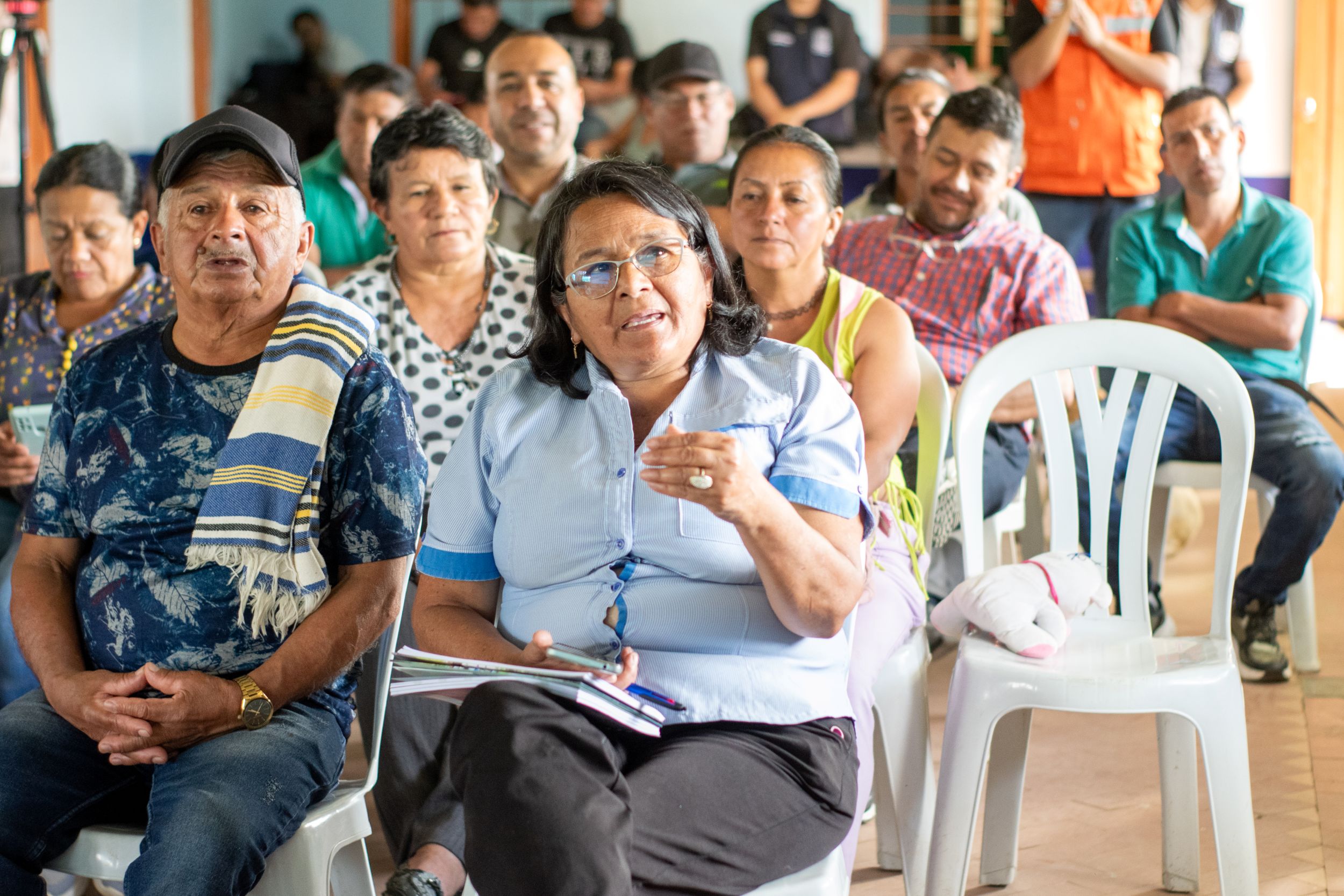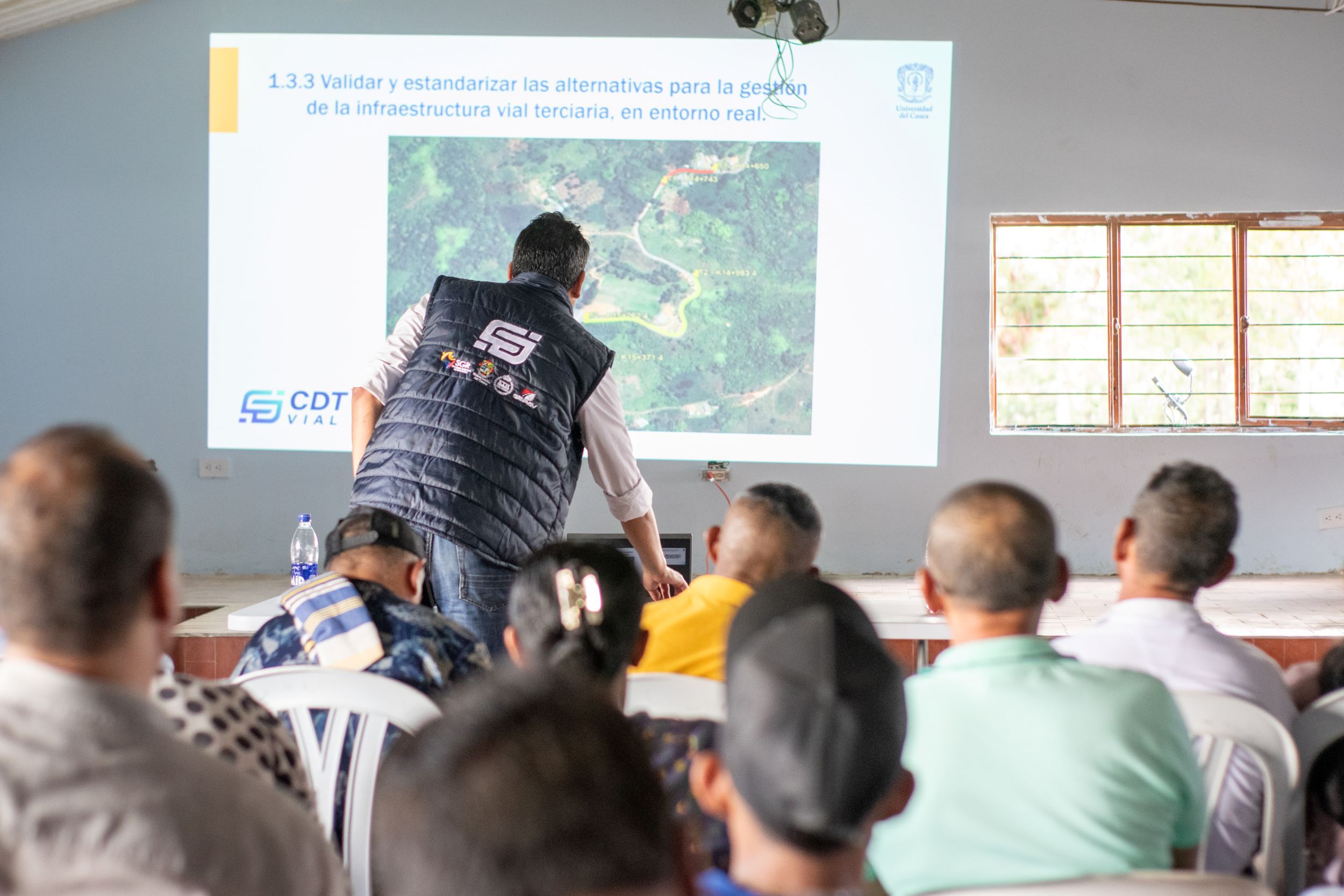News
CDT Vial Project: Transforming Cauca’s Rural Roads with Innovation and Sustainability
This commitment to innovation seeks to offer viable alternatives for the improvement and maintenance of tertiary roads, reinforcing the commitment to sustainable mobility and the development of Cauca.
On January 28, Professor Jaime Rafael Obando Ante, Director of the CDT Vial project, along with his technical team, led a dialogue session with the community of the San Rafael village, a rural area of Popayán. During the meeting, the start of construction on a 1-kilometer test section was announced, designed to evaluate innovative alternatives in rural road infrastructure.

Provided photo
This initiative aims to analyze the performance and feasibility of sustainable technologies for future implementation:
-
Geocells: Structural reinforcement using geosynthetics.
-
Eco-materials: Use of demolition waste for paving.
-
Recycled rubber: Incorporation of rubber granules in surface treatments.
The project, funded by the Government of Cauca through the General System of Royalties (SGR) and executed by the University of Cauca, is carried out in collaboration with the Royal Institute of Technology (KTH) in Sweden, the Popayán City Hall, and companies such as PAVCO, Colbitumen, and Álvaro Vásquez.
Local communities are also actively participating in the process, strengthening the regional innovation system.

Provided photo
This initiative aims to improve rural mobility, benefiting 37 municipalities in the department of Cauca through the implementation of sustainable and efficient solutions for road infrastructure.
The project is executed by the University of Cauca, specifically the Faculty of Civil Engineering, where, through research processes in science, technology, and innovation, it seeks to enhance the development of technological capabilities and applied research. The goal is to generate new alternatives for managing the department’s tertiary road system, ensuring applicable results for Cauca’s rural roads and ultimately improving the quality of life for local populations.
Written by: CDT Vial Project Communications

